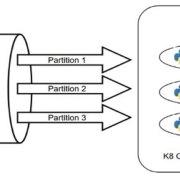En 2024, les architectes de solutions pourront obtenir 9 certifications cloud basées sur les rôles pour développer leurs compétences et leurs connaissances dans le domaine.
Êtes-vous enthousiaste à devenir un architecte de solutions Cloud et à prendre votre carrière à de nouveaux sommets ?
Without further ado, let’s dive into the world of cloud certifications.
Êtes-vous enthousiaste à devenir un architecte de solutions cloud et à porter votre carrière à de nouveaux sommets? Le cloud computing transforme la façon dont les organisations utilisent l’infrastructure numérique, ce qui en fait une compétence cruciale à maîtriser. Si vous êtes intéressé par le potentiel illimité de la technologie cloud, alors ce guide est fait pour vous.
Dans ce guide, vous apprendrez les 9 certifications basées sur les rôles les plus importantes du cloud, spécialement conçues pour les architectes de solutions. Alors que nous nous dirigeons vers 2024, nous sommes à l’aube d’une ère passionnante de la technologie cloud. Ensemble, nous explorerons neuf certifications primordiales offertes par des leaders du secteur et des organisations respectées, chacune étant une pierre angulaire sur votre chemin vers une certification professionnelle en cloud.
Sans plus tarder, plongeons dans le monde des certifications cloud.
Les certifications cloud sont un excellent moyen de se démarquer dans un marché saturé et de se positionner comme un expert dans le domaine des technologies cloud. En tant qu’architecte de solutions cloud, vous serez en mesure d’utiliser les données pour aider les entreprises à développer des solutions innovantes et à prendre des décisions informées. Les certifications cloud vous permettront d’acquérir les compétences nécessaires pour réussir dans ce domaine.
Les certifications cloud sont généralement divisées en trois catégories : les certifications de base, les certifications avancées et les certifications spécialisées. Les certifications de base sont conçues pour les débutants et offrent une introduction aux technologies cloud. Les certifications avancées sont conçues pour les professionnels expérimentés et offrent une solide compréhension des technologies cloud. Les certifications spécialisées sont conçues pour ceux qui souhaitent se spécialiser dans un domaine particulier des technologies cloud.
Les certifications cloud peuvent être obtenues auprès de fournisseurs de services cloud tels que Amazon Web Services (AWS), Microsoft Azure et Google Cloud Platform (GCP). Chaque fournisseur propose une gamme complète de certifications qui couvrent tous les aspects des technologies cloud. Ces certifications sont conçues pour aider les professionnels à acquérir les compétences nécessaires pour gérer et développer des applications sur leurs plateformes respectives.
Les certifications cloud peuvent également être obtenues auprès d’organisations tierces telles que CompTIA et Linux Foundation. Ces organisations proposent des certifications qui couvrent un large éventail de technologies cloud et qui sont reconnues par l’industrie. Ces certifications sont conçues pour aider les professionnels à développer leurs compétences en matière de gestion et de développement d’applications sur différentes plateformes cloud.
Enfin










